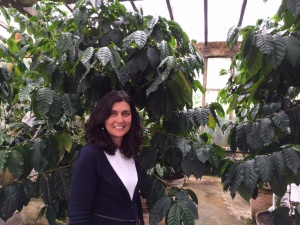Diniz, I., Figueiredo, A., Loureiro, A., Batista, D., Azinheira, H., Varzea, V., Pereira, A.P., Gichuru, E., Moncada, P., Guerra-Guimaraes, L., Oliveira, H. & Silva, M.D. (2017) A first insight into the involvement of phytohormones pathways in coffee resistance and susceptibility to Colletotrichum kahawae.
PLOS One,
12(5), e0178159. DOI:10.1371/journal.pone.0178159 (IF2017 2,766; Q1 Multidisciplinary Sciences)
Understanding the molecular mechanisms underlying coffee-pathogen interactions are of key importance to aid disease resistance breeding efforts. In this work the expression of genes involved in salicylic acid (SA), jasmonic acid (JA) and ethylene (ET) pathways were studied in hypocotyls of two coffee varieties challenged with the hemibiotrophic fungus Colletotrichum kahawae, the causal agent of Coffee Berry Disease. Based on a cytological analysis, key time-points of the infection process were selected and qPCR was used to evaluate the expression of phytohormones biosynthesis, reception and responsive-related genes. The resistance to C. kahawae was characterized by restricted fungal growth associated with early accumulation of phenolic compounds in the cell walls and cytoplasmic contents, and deployment of hypersensitive reaction. Similar responses were detected in the susceptible variety, but in a significantly lower percentage of infection sites and with no apparent effect on disease development. Gene expression analysis suggests a more relevant involvement of JA and ET phytohormones than SA in this pathosystem. An earlier and stronger activation of the JA pathway observed in the resistant variety, when compared with the susceptible one, seems to be responsible for the successful activation of defense responses and inhibition of fungal growth. For the ET pathway, the down or non-regulation of ET receptors in the resistant variety, together with a moderate expression of the responsive-related gene ERF1, indicates that this phytohormone may be related with other functions besides the resistance response. However, in the susceptible variety, the stronger activation of ERF1 gene at the beginning of the necrotrophic phase, suggests the involvement of ET in tissue senescence. As far as we know, this is the first attempt to unveil the role of phytohormones in coffee-C. kahawae interactions, thus contributing to deepen our understanding on the complex mechanisms of plant signaling and defense.

